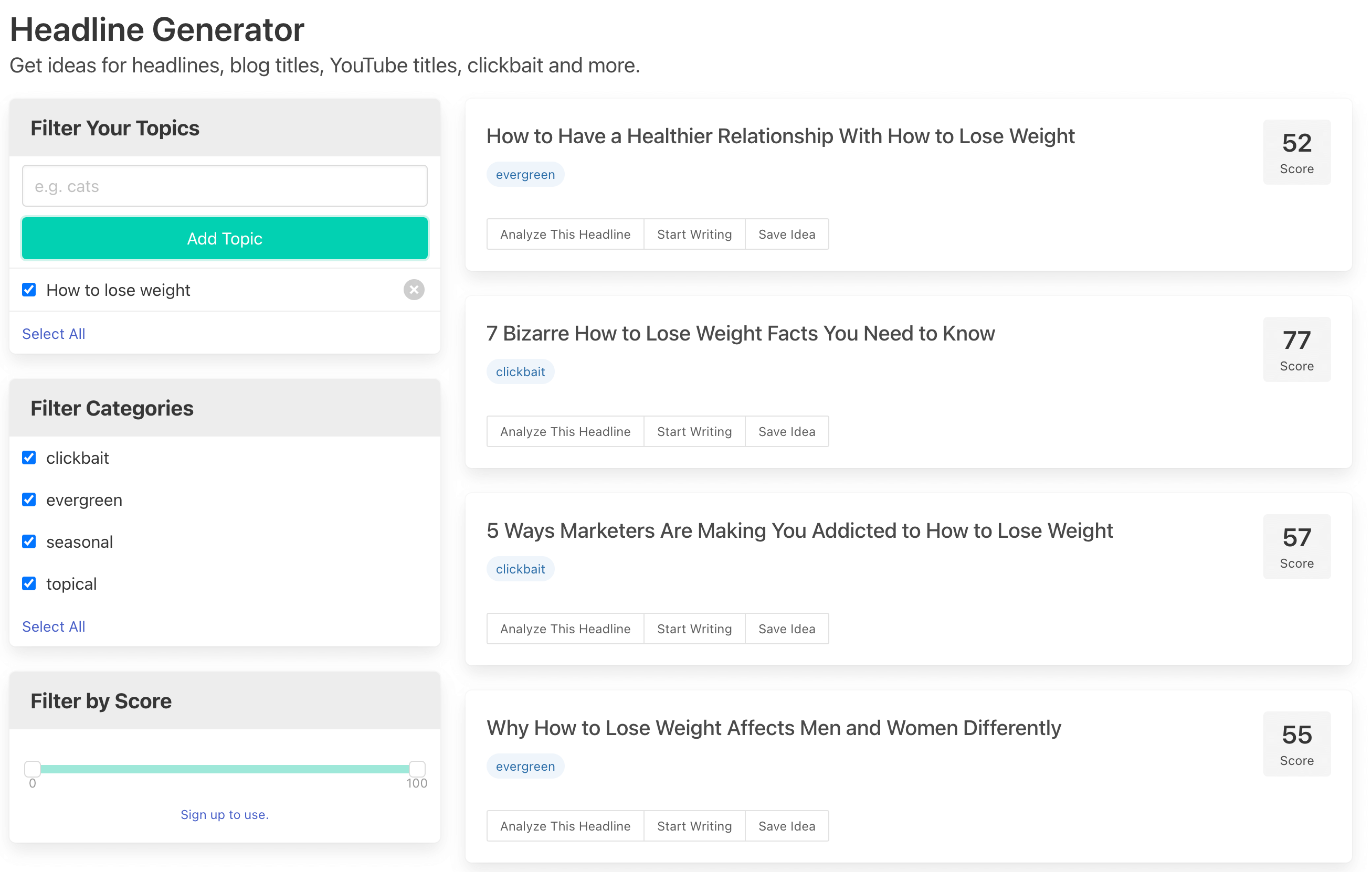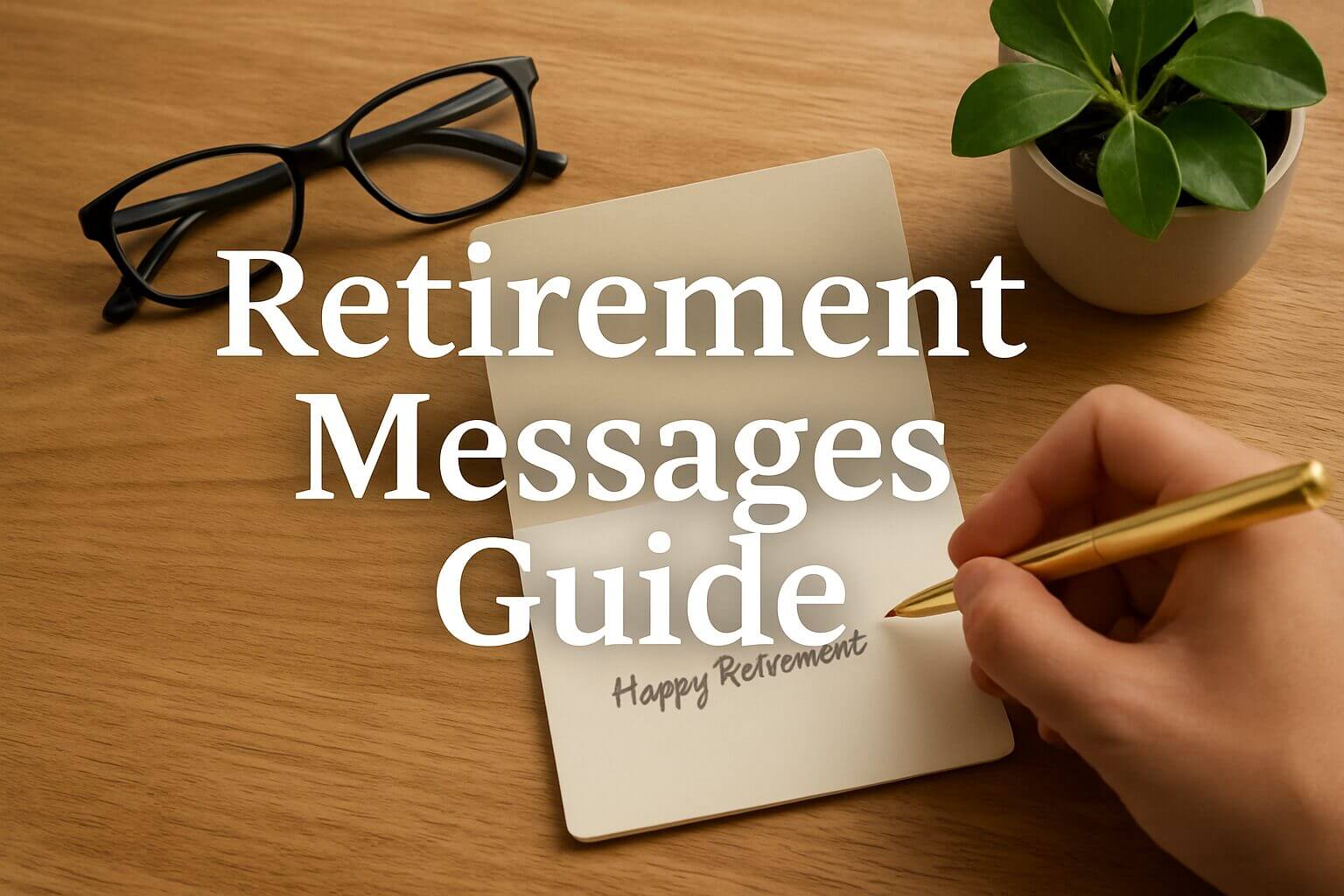In the world of online content, a headline plays a crucial role in capturing the attention of readers. A well-crafted headline has the power to make a reader click on an article, read the first sentence, and ultimately engage with the entire piece of content.
Mastering the art of headline writing is essential for content creators, bloggers, and marketers who want to attract an audience and drive traffic to their websites. This blog section will explore the techniques and strategies for creating attention-grabbing titles that compel readers to click and read.
This comprehensive guide explores the art of headline writing, delving into its significance and various strategies to create compelling, attention-grabbing titles.
In the sea of online content, it’s challenging to stand out and capture readers’ attention. The solution lies in mastering the craft of effective headline writing.
Key Takeaways:
- Unleash the Power of Numbers: Incorporating numbers and statistics in headlines can significantly increase click-through rates and engagement.
- Specificity is Your Friend: Be precise and relevant in your headlines. Vague titles can confuse readers and lower engagement rates.
- Know Your Audience: Tailoring headlines to your audience’s preferences exponentially increases the chances of grabbing their attention.
- Emotional Triggers Work: Using emotional triggers such as curiosity, fear, aspiration, or joy in your headlines can drive readers to engage further with the content.
- Sense of Urgency Captivates: Creating a sense of urgency in your headlines can motivate readers to take immediate action, thus increasing click-through rates.
- Experimentation is Key: Testing different headline formulas and refining them based on feedback will help you create attention-grabbing titles that resonate with your audience.
Why Mastering Headline Writing is Important
The headline is the first impression a reader gets of an article or blog post. It needs to be compelling, informative, and intriguing to convince the reader that the content is worth their time. Here are a few reasons why mastering headline writing is crucial:
- Capture Attention: With the abundance of content available online, attention is a scarce resource. A strong headline grabs the reader’s attention and entices them to click and read further.
- Increase Click-Through Rates: A well-crafted headline can significantly impact click-through rates (CTR). When a headline piques the reader’s interest, they are more likely to click on the article and explore the content.
- Improve Social Media Engagement: Catchy headlines also perform well on social media platforms. They have the potential to be shared, liked, and commented on, increasing the reach and visibility of the content.
- Establish Credibility and Trust: A clear and concise headline indicates that the content creator knows their topic well. This helps establish credibility and builds trust with the reader, encouraging them to continue reading.
- Enhance Search Engine Optimization (SEO): Well-optimized headlines can improve a website’s search engine ranking. Including relevant keywords in the headline helps search engines understand the content and rank it higher in search results.
To master headline writing, content creators should focus on being unique, specific, conveying a sense of urgency, and utilizing emotional power words. By understanding the formulas and techniques behind attention-grabbing headlines, content creators can attract a broader audience and effectively deliver their messages.
In the next section, we will delve deeper into some of the specific techniques and strategies for writing attention-grabbing headlines.
Understanding Your Audience
When it comes to writing attention-grabbing headlines, understanding your audience is essential. By knowing your target demographic and tailoring your headlines to their preferences, you can increase the chances of capturing their attention and enticing them to read your blog post.
Identifying Your Target Demographic
To write effective headlines, you need to have a deep understanding of who your target audience is. Conduct thorough research and analysis to gain insights into their demographics, interests, and pain points. This information will help you create headlines that resonate with them and address their specific needs.
Tailoring Headlines to Your Audience’s Preferences
Once you have identified your target demographic, you can tailor your headlines to their preferences. Consider their language, tone, and style preferences. Use specific words and phrases that resonate with them and pique their curiosity. By speaking directly to your audience and addressing their interests, you will capture their attention and make them more likely to click on your blog post.
Here’s a table to summarize the key points:
| Consideration | Importance |
|---|---|
| Identifying Your Target Demographic | High |
| Tailoring Headlines to Your Audience’s Preferences | Moderate |
By understanding your audience and tailoring your headlines to their preferences, you can master the art of writing attention-grabbing titles. Keep experimenting and testing different headline variations to see what resonates best with your audience. Remember, capturing your audience’s attention from the start is crucial for the success of your blog.
Utilizing Emotional Triggers
Crafting attention-grabbing headlines is essential for capturing the interest of readers and driving engagement with your content. A key element in creating compelling titles is the use of emotional triggers. Understanding the role of emotions and employing techniques to evoke them can make your headlines more impactful and effective.
The Role of Emotion in Headline Writing
Emotions play a significant role in capturing the attention of readers and motivating them to engage with your content. By tapping into the latest neuroscience and psychology behind headline writing, you can create titles that resonate with readers on an emotional level. Emotional triggers such as curiosity, fear, aspiration, joy, exclusivity, surprise, and social validation can prompt readers to click through and read more.
Techniques for Evoking Emotion in Headlines
There are several techniques you can use to evoke emotions in your headlines and make them more compelling:
- Pose Intriguing Questions: Headlines that ask thought-provoking questions can spark curiosity and compel readers to click through to find the answers.
- Address Concerns and Offer Solutions: By highlighting potential risks or offering solutions to common problems, you tap into readers’ fears and concerns, creating a sense of urgency to seek answers.
- Promote Self-Improvement: People are constantly seeking ways to improve their lives. Headlines that promise tips, strategies, or solutions for self-improvement appeal to readers’ desire for progress and can attract their attention.
- Share Inspiring Stories or Achievements: Headlines that showcase heartwarming stories, inspirational achievements, or relatable experiences evoke strong emotions and resonate with readers on a deeper level.
- Create a Sense of Exclusivity or FOMO: Headlines that convey a sense of scarcity or urgency can generate interest and create a fear of missing out, prompting readers to take action.
- Challenge Common Beliefs: Headlines that defy expectations or challenge common beliefs pique curiosity and drive engagement by offering unexpected or surprising information.
- Leverage Social Proof: Headlines that incorporate social proof, such as testimonials or expert endorsements, tap into readers’ desire for validation and credibility.
By employing these techniques, you can create attention-grabbing headlines that resonate with your audience and compel them to click through and engage with your content. Remember to strike a balance between emotional appeal and the authenticity and value of your content.
Crafting Specific and Relevant Headlines
The Importance of Specificity in Headlines
When it comes to writing attention-grabbing headlines, specificity is key. Specific headlines clearly communicate what the content is about and give readers a clear idea of what to expect. Vague or generic headlines can leave readers unsure about the relevance or value of the content, causing them to move on without clicking.
Specific headlines also create a sense of authority and credibility. By including specific details and numbers, you can demonstrate that your content is based on real-world experiences and proven strategies. This can increase readers’ trust in your content and lead to higher engagement rates and conversions.
For example, compare these two headlines:
- “Tips for Better Time Management”
- “5 Time-Tested Techniques to Boost Productivity and Manage Your Time Effectively”
The first headline is vague and doesn’t provide much information about what the tips are or how they can help. The second headline is specific, indicating that it offers 5 proven techniques for boosting productivity and managing time effectively.
Tips for Writing Relevant and Engaging Titles
In addition to being specific, headlines should also be relevant and engaging. They should grab readers’ attention, spark their curiosity, and motivate them to click through and read more. Here are some tips for crafting relevant and engaging titles:
- Use emotional triggers: Incorporate words or phrases that evoke specific emotions or feelings in readers, such as excitement, surprise, or curiosity. Emotional triggers can create a strong connection with readers and make your content more memorable.
- Convey a sense of urgency: Use language that implies a limited time frame or a pressing need to create a sense of urgency. Phrases like “Limited Time Offer” or “Don’t Miss Out” can motivate readers to take immediate action.
- Leverage social proof: Highlight the popularity or success of your content by including numbers, statistics, or testimonials in your headlines. This can build trust and credibility with readers and encourage them to engage with your content.
By crafting specific and relevant headlines that incorporate these tips, you can increase the effectiveness of your titles and create content that resonates with your audience. Remember to test and refine your headlines to see what works best for your target audience and be willing to make adjustments as needed.
Incorporating Numbers and Statistics
Writing compelling headlines is essential for capturing readers’ attention and driving traffic to your blog posts. One effective technique to create attention-grabbing titles is incorporating numbers and statistics. Research shows that headlines featuring specific numbers tend to engage more readers and increase click-through rates (CTR).
The Impact of Numbers in Headlines
Numbers in headlines provide a clear expectation of what readers will get from your content. They offer practical information and structure the content in an organized and logical way. Our brains are naturally attracted to numbers because they help organize information and make it easier to digest and recall. In fact, odd numbers tend to be more effective than even numbers, as they are perceived as more believable and memorable.
When testing headlines, marketers have found that using odd numbers, such as seven, instead of spelling them out, leads to a 20% increase in click-through rates. Additionally, when writing a step-by-step guide, it’s recommended to limit the number of steps to nine, as the human brain typically struggles to process more than nine items at a time.
How to Effectively Include Numbers in Titles
When incorporating numbers into your headlines, it’s important to remember a few key points. Start your headline with the number to indicate the content’s organization and structure. Use numerals instead of spelling out the numbers, as they are easier to read and take up fewer characters.
To make your headlines more compelling, focus on providing specific and ultra-specific information. Ultra-specific headlines communicate exactly what the reader will get by clicking on the post. For example, instead of writing “Steps to Start a Home Business,” use “7 Steps to Start a Home-Based Business.” This level of specificity gives readers a clear understanding of what they will learn from your content.
Remember that the purpose of the headline is to capture the reader’s attention and convince them to read the first sentence. Incorporating numbers and statistics helps to create a sense of authority and provide a clear benefit to the reader. By mastering the art of headline writing and incorporating numbers effectively, you can increase engagement, click-through rates, and ultimately drive more traffic to your blog.
In conclusion, using numbers and statistics in your headlines can significantly improve the performance of your blog posts. They provide a clear expectation of what readers will get, enhance the benefit offered by your headline, and make your content more shareable. By following these techniques, you can master the art of headline writing and create attention-grabbing titles for your blog.
Mastering Headline Writing: Techniques for Attention-Grabbing Titles
Writing compelling headlines is crucial for capturing the attention of your audience and driving traffic to your blog or website. Using techniques like creating a sense of urgency can greatly enhance the effectiveness of your headlines.
Creating a Sense of Urgency
Incorporating urgency in your headlines can motivate your readers to take immediate action. By instilling a fear of missing out or a desire to take advantage of an opportunity, you can increase click-through rates and engagement. Here are some techniques to create a sense of urgency in your headlines:
- Use time-sensitive words: Incorporate words like “now,” “today,” “last chance,” “limited time,” or “only a few left” to emphasize the urgency of your offer.
- Highlight scarcity: Mention limited quantities, limited availability, or exclusive offers to create a sense of scarcity and urgency.
- Communicate deadlines: If there is a deadline for a special promotion or limited-time offer, make it clear in your headline to encourage immediate action.
- Offer exclusive deals: Use words like “exclusive,” “members-only,” or “limited offer” to make your audience feel that they have a unique opportunity that is only available for a short period.
- Use numbers and countdowns: Incorporate specific numbers or countdowns in your headlines to convey a sense of urgency and time sensitivity. For example, “Limited Time Offer: 50% Off for the Next 24 Hours.”
Why Urgency is Effective in Headlines
Urgency in headlines works because it taps into human psychology and our innate desire to take advantage of opportunities and avoid missing out. When people feel a sense of urgency, they are more likely to act quickly and click on your headline to learn more. The fear of missing out on a limited-time offer or exclusive deal can be a powerful motivator for readers to take immediate action.
By incorporating urgency into your headlines, you can effectively grab the attention of your audience and increase click-through rates. However, it’s important to use urgency ethically and responsibly. Avoid false or exaggerated claims that cannot be supported and ensure that your offer or promotion lives up to the expectations set by your headline.
Mastering the art of writing attention-grabbing headlines takes practice and experimentation. By incorporating techniques like creating a sense of urgency, you can maximize the effectiveness of your headlines and drive more engagement with your content.
Mastering Headline Writing: Techniques for Attention-Grabbing Titles
Writing captivating headlines is crucial for grabbing readers’ attention and enticing them to click on your content. In this section, we will explore some proven techniques and formulas for mastering the art of headline writing.
Experimenting with Headline Formulas
To create effective headlines, it’s important to experiment with different formulas that have been proven to work. Here are some headline formulas that you can try:
1. Who Else Wants…? This classic social-proof strategy implies an existing consensus desire. For example, “Who Else Wants More People to Read Their Writing?” or “Who Else Wants a Higher Paying Job?”
2. Here Is a Method That Is Helping [blank] to [blank] This formula allows you to identify your target audience and the benefits you can provide them. For instance, “Here Is a Method That Is Helping Homeowners Save Hundreds on Insurance” or “Here Is a Method That Is Helping Children Learn to Read Sooner.”
3. Little-Known Ways to [blank] This intriguing formula reveals lesser-known methods for accomplishing something. Try headlines like “Little-Known Ways to Save on Your Heating Bill” or “Little-Known Ways to Optimize Gmail.”
4. Get Rid of [problem] Once and For All This formula addresses a painful problem or unfulfilled desire and offers a solution. For example, “Get Rid of Your Unproductive Work Habits Once and For All” or “Get Rid of That Carpet Stain Once and For All.”
5. Here’s a Quick Way to [solve a problem] People love quick and easy solutions to nagging problems. Consider headlines like “Here’s a Quick Way to Get Over a Cold” or “Here’s a Quick Way to Back Up Your Hard Drive.”
Proven Formulas for Attention-Grabbing Headlines
In addition to experimenting with different headline formulas, there are some proven formulas that consistently grab readers’ attention. Here are a few examples:
- The Ultimate Guide to [blank]: This promises a comprehensive resource on a specific topic.
- What Everybody Ought to Know About [blank]: This creates curiosity and implies valuable information.
- Give Me [short time period] and I’ll Give You [blank]: This promises quick and effective results.
- If You Don’t [blank] Now, You’ll Hate Yourself Later: This taps into the fear of missing out and creates urgency.
Experimenting with different headline formulas and incorporating the proven techniques mentioned above will help you create attention-grabbing titles that entice readers to click and engage with your content.
Conclusion
Writing effective and attention-grabbing headlines is an essential skill for every content creator in today’s digital landscape. By using various techniques and strategies, you can craft compelling titles that drive more traffic to your website and engage your audience.
Mastering the Art of Headline Writing
To master the art of headline writing, here are some key techniques to keep in mind:
- Use Numbers: Incorporating numbers in your headlines, such as “5 Tips” or “10 Secrets,” can make them more appealing and draw readers’ attention.
- Be Specific: Create headlines that clearly convey the unique angle or perspective of your content. Avoid generic phrases and use specific language to set your content apart.
- Use Power Words: Power words are words that evoke strong emotions and persuade readers to take action. Include words like “proven,” “easy,” “ultimate,” or “essential” to make your headlines more compelling.
- Be Unique: Find a unique angle or perspective on your topic to differentiate your content from others. This will make readers curious and more likely to click on your headline.
- Keep it Short and Sweet: Short headlines are more likely to grab readers’ attention and are easier to remember. Aim for a headline length of 10-12 words and avoid complex sentence structures.
- Use Keywords: Incorporate relevant keywords into your headlines to improve search engine rankings and attract more organic traffic to your website.
- Test and Iterate: Experiment with different headlines and use A/B testing to compare their performance. Analyze the results and make adjustments to optimize your headlines for maximum impact.
Mastering the art of headline writing takes time and practice. By using these techniques, you can create compelling titles that not only grab readers’ attention but also drive more traffic and engagement to your website. So, start experimenting and refining your headline-writing skills to achieve better results with your content.





